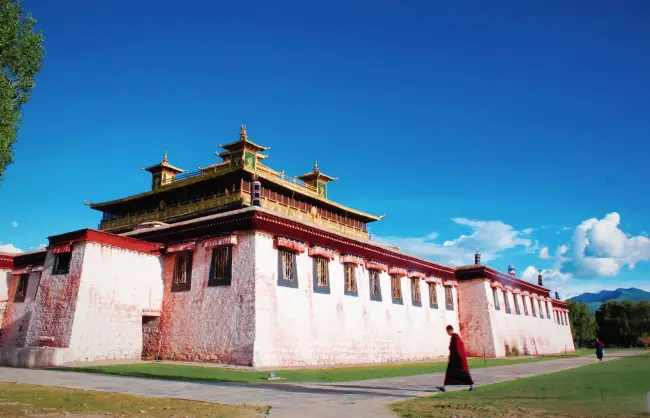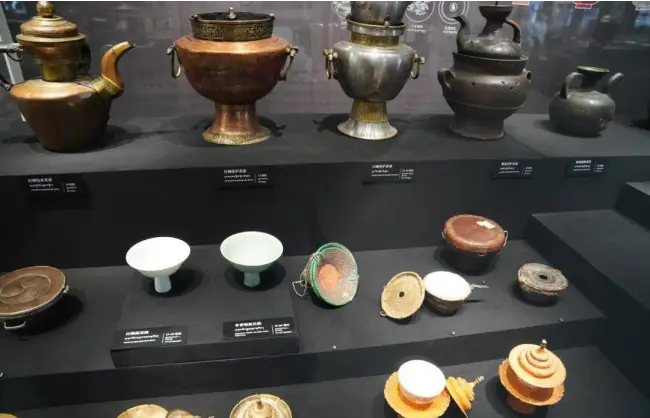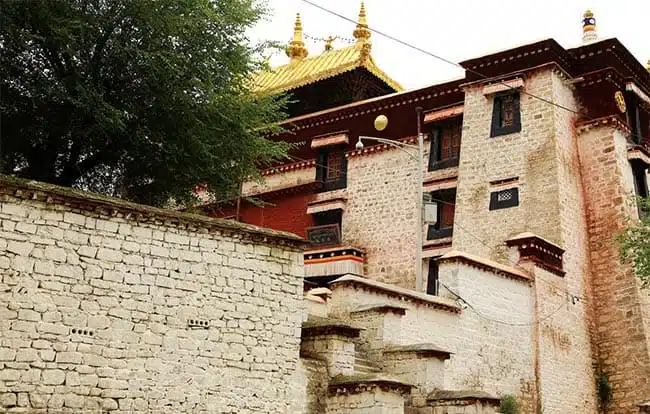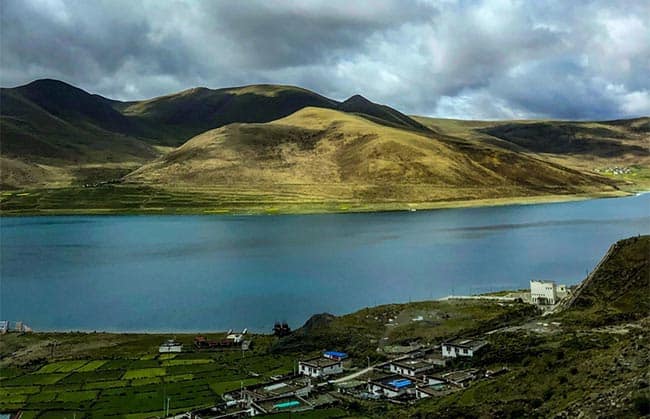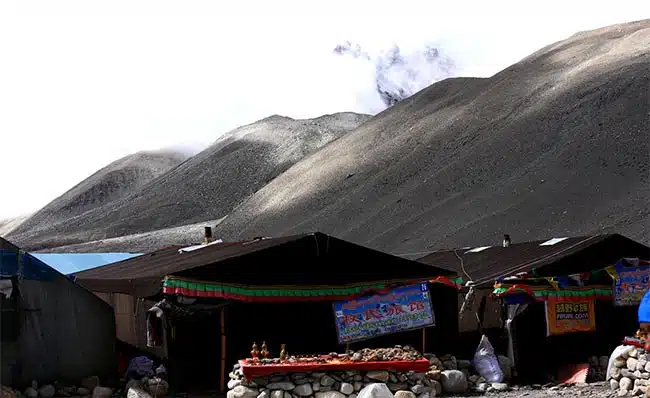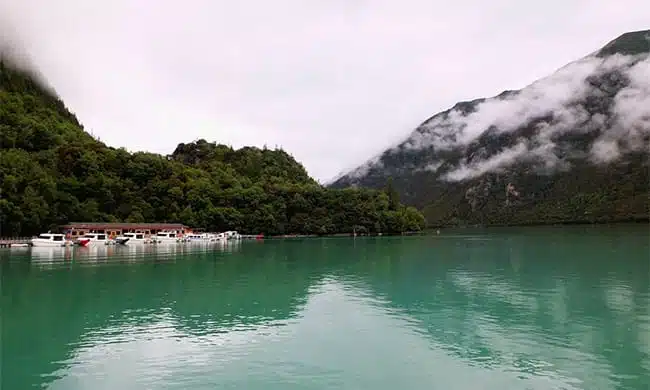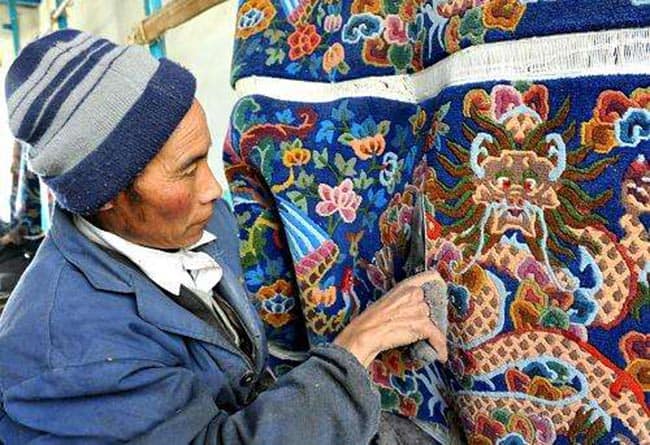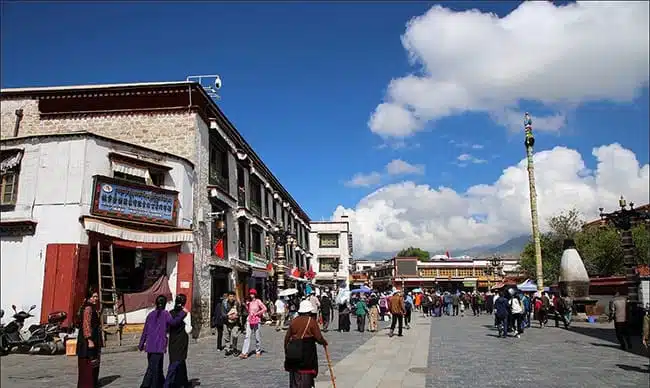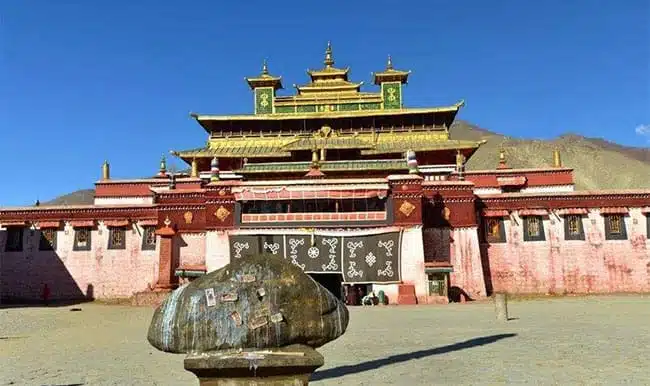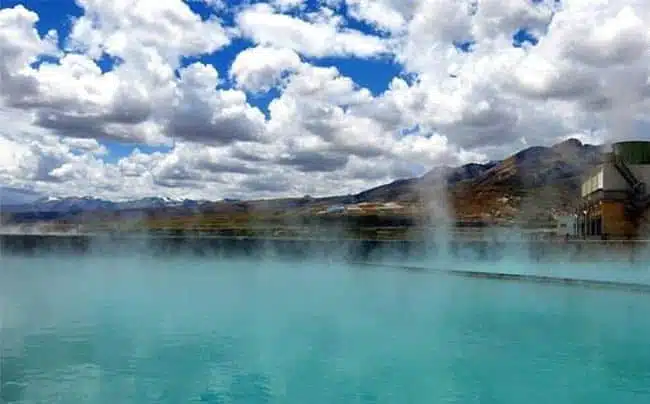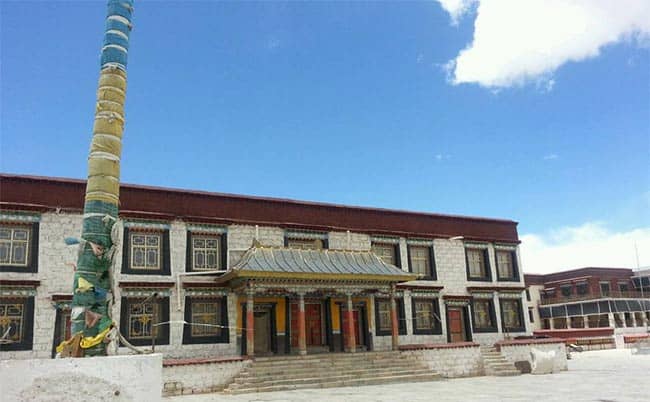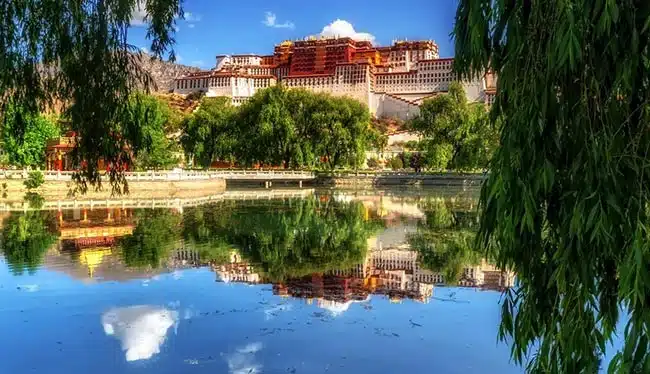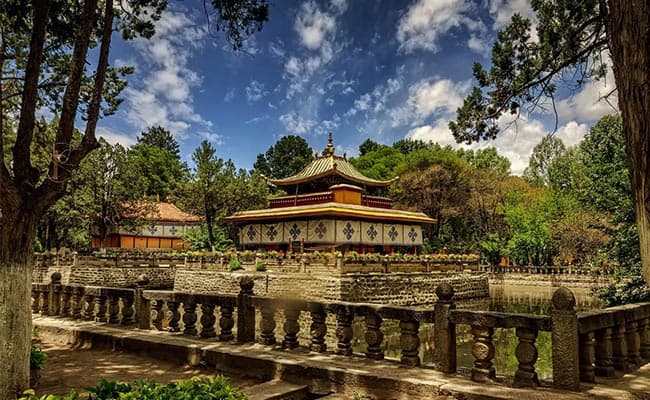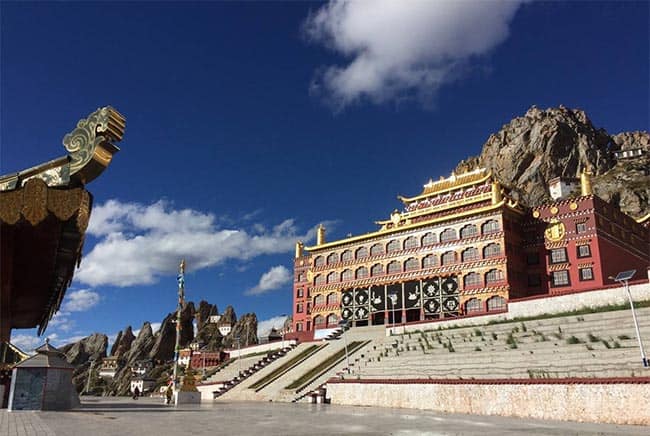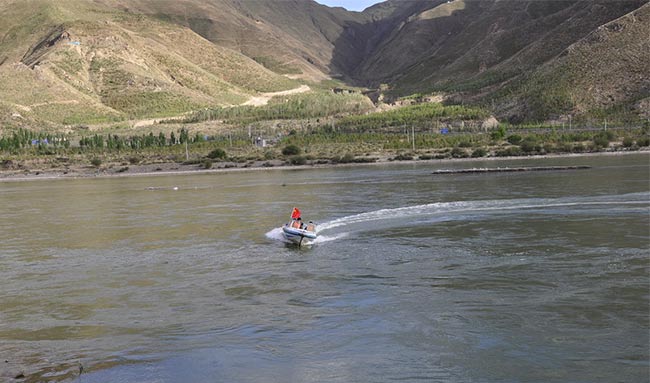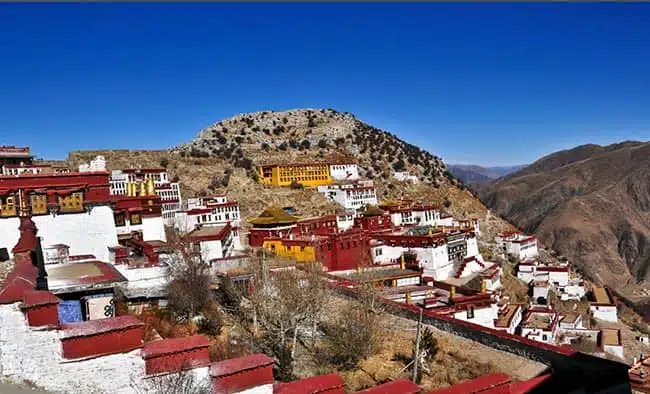Tibet, known as the “Roof of the World,” is a “base camp” consisting of a series of high mountains. Five of the world’s 14 peaks above 8,000 meters are in Tibet, including the world’s highest peak, Mount Everest. Its rich Buddhist colors, the magnificent Potala Palace, sacred lakes & mountains have attracted countless domestic and foreign tourists to travel. The “King of Sacred Mountains” in the Ali region – Mount Kailash is the center of the world in the hearts of believers. The three “sacred lakes” – the Yamdorktso Lake, Lake Manasarovar, and the Namtso Lake as bright pearls set on this snowy plateau. Do not miss the Everest Base Camp overnight, which will be a once-in-a-lifetime experience.
Samye Temple locates in the Chatang County, Lhoka (Shannan) Prefecture, at the north of the Yarlung Zangbo River, about 130km to Lhasa. It was the first temple in Tibet for the people to become monks by tonsure, also the first temple had all the Buddha, Dharma and Sangha in…
At an elevation of 4325 meters above sea level, the Tidrum Nunnery is situated northwest of Drigung Monastery, approximately 110 kilometres from Lhasa. Hermitage caves can be found in the hills that encircle the nunnery, which is situated in a charming valley. Prayer flag threads are strung from hill…
Tibet Museum, located on the opposite of east Norbulinka Palace in Lhasa, covering 53959m2 in total with gross area of 23508m2 and exhibition area of 10451m2. It is the first museum in Tibet bearing modern functions. Belonging to the the 62 Projects of Aid to Tibet for celebrating the 30th anniversary of…
On the list National Relic Protection Units, Sera Monastery is one of Six Great Major Monasteries of Gulug school of Tibetan Buddhism, located at the foot of Serawoza Mountain about 3000m far from the northern suburban of Lhasa. Combined with Drepung Monastery and Ganden Monastery, Sera Monastery is renowned…
Yamdorktso Lake is one of the “Three Holy Lakes in Tibet” (Namtso Lake, Manasarovar Lake and Yamdorktso Lake), bearing the Tibetan meaning “the above coral twig”, corresponding with its shape well. It locates at the Nagarzhag County of Lhoka Prefecture, the south side of the Yarlung Zangbo River. As…
The Everest Base Camp (EBC) is a special zone set for protecting the core area of the Everest and also providing the life supply. Chinese EBC locates at the north side of the Everest with 5200m higher than the sea level. There are also EBCs in the territory of Nepal at the south…
Mt. Everest stands at the Tingri County of Shigatse Prefecture, on the border line of China and Nepal, shared the South Slope by Nepal and the North Slope with China. With the height of 8848.43m, Mt. Everest occupies the position of the “the main peak of the Himalayas and…
Namtso Lake resembles a rectangle and situates between the Dangxiong County and Bange County, at the middle of Tibet and occupies over 1920 km2, about 70 km long and 30 km wide, over the sea level 4718m, renowned as the highest salty lake in the world. So the travelers who…
Baksumtso Lake is a famous holy lake and holy place for Tibetan Red Hats, meaning “green water” in Tibet language. Located at the deep canyon of upstream of Ba River, Nyin Chi Region, Baksumtso Lake covers about 4000 hectares and 3700 meters over than the sea level. It has…
Lhasa Carpet Factory is one of most famous Tibetan Carpet Factory in China, located in downtown of Lhasa City. Carpet is a necessity for families living in the pastoral area, which leads this Tibetan traditional handicraft keeping a long history and plentiful types as well. Lhasa Carpet Factory, as one of…
Barkhor Street, also called Bajiao Street, is a famous turning scripture path and business center in Lhasa, conserving well the traditional appearance and living custom of the ancient Lhasa. Enrolled on the list of “Ten National Historical and Cultural Street”, Barkhor Street is considered as one of most charming and special…
Zaki Temple is the only one temple of the God of Wealth in the whole Tibetan region. Located on the Zaki Road, in north suburb of Lhasa, Zaki Temple keeps a small scale but has been received quite good attendance with free charges. Zaki Temple is known as a…
Yangpachen is a town of Damxung County, located at the 91.8 km northwest of Lhasa City. It earns its fame by the rich geothermal resources, the titles of the highest geothermal power plant in the world and the biggest geothermal power plant in China and the only power plant…
Yangpachen Monastery situates in the Yangpachen Town, Damxung County about 93km from Lhasa downtown which is an important conjunction connecting Lhasa to east, reaching Qinghai province to north, where Qinghai-Tibet Highway and China-Nepal Highway pass. Corresponding to its important location, the Yangpachen Monastery also bears a significant position in religion—it…
Potala is Sanskrit, referring to the residence of the Goddess of Mercy. Potala Palace is the shrine for all pilgrims as a great representation of Tibet. People come here would be feasted from both sense organ and inner soul by its magnificent physical construction and collections as well as its significant religious,…
Norbulingka was firstly built in 1740s, the time of the 7th Dalai Lama and experienced about 200 years’ construction until the time of 14th Dalai Lama. On the list National Relic Protection Units, the Norbulingka situated at the western suburban of Lhasa for over 200 years. It is a typical Tibetan style garden…
Zezhol Monastery is located at the cliff of the famous holy mountain Mt. Zezhol of Dingqing County, Chamdo, east of Tibet, 4800m above sea level, about 37km from the county town. It is one of monasteries with highest altitude in Tibet, and also one of the oldest and most…
Nietang Buddha situates at 40km southwest of Lhasa, built over 700 years ago. Sitting on the north side of Nietang Mountain, along Lhasa River at east, Nietang Buddha is the first attraction to see by the travelers coming from the Gonggar airport of Lhasa City. It is the biggest cliff sculpture in…
Lhasa River runs in the south central part of Tibetan region, originating from the Nyainqentanglha Range. Its Tibetan name is “Kyi River”, sharing the meaning of “happy river”. Flowing through Maizhokunggar County, Dazi County and Lhasa City lastly as well as meeting with the Yarlung Tsangpo River at the south suburban of…
Ganden Monastery shares the fame of “Three Great Monasteries in Lhasa” with Drepung Monastery and Sera Monastery, and also the title of “Six Great Monasteries of Gulug School (Yellow Sect)”. Built in 1409, it holds the unique position in the six monasteries of Gulug School because of its founder Tsongkhapa who was…


